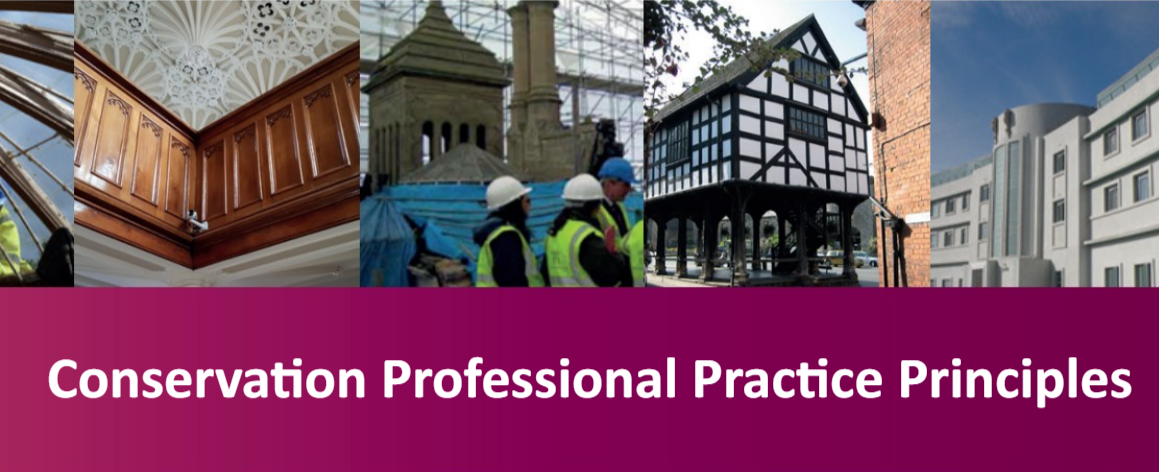Updating Conservation Professional Practice Principles
The IHBC’s Conservation Professional Practice Principles, first published in 2017, is to be updated to mark the institute’s 25th anniversary. The IHBC launched Conservation Professional Practice Principles at the 2017 Annual School in Manchester, and published it jointly with the Historic Towns and Villages Forum and Civic Voice. Five years on, the IHBC is looking to update it.
The document emphasises that conservation professional practice is about making balanced judgments and finding ‘creative solutions, negotiation and compromise in order to find optimum outcomes for heritage assets’. This involves balancing a wide range of values within various legislative frameworks, and within finite capital and revenue budgets. The document has a strong emphasis on place-making. The five years since the original publication have been full. There has been dramatic evidence of the impacts of climate change and greater appreciation of the importance of biodiversity. The longer-term impacts of the Covid pandemic are still unfolding, and include changes to high streets and live/work patterns.
Neighbourhood planning has become more embedded and often addresses heritage as an integral part of wider planning for the area, for example through policies on high streets, economic development and green infrastructure. The National Trust’s Guide to Heritage in Neighbourhood Plans (2019) gives more insight into this.
There has also been a renewed emphasis on the need to address geographical economic inequalities (under ‘levelling up’ and various other labels). Against this context, the IHBC was involved in the establishment of the Conservation, People and Places All-Party Parliamentary Group and its first inquiry into the economic values of heritage. The current economic turmoil will also impact on high streets, homes, businesses and the ways in which historic buildings and places are used. All of this has implications for heritage practice. There is also a changing political context, including shifting positions and divides within the main political parties. For example, this led to the publication of the Planning White Paper, followed by the abandonment of most of its key reforms. In this context, it is all the more important for heritage practice to be a positive, constructive, problem-solving activity.
As part of the review process, a consultation has been undertaken. Feedback has generally been positive, with constructive suggestions for updates. The feedback suggests that it would be useful to promote awareness of the document more rigorously (the original document was sent to all members).
The current document may be downloaded from the IHBC’s Toolbox at http://ihbconline.co.uk/toolbox. It is envisaged that the updated version will be published early in 2023.
This article originally appeared in the Institute of Historic Building Conservation’s (IHBC’s) Context 174, published in December 2022. It was written by Dave Chetwyn, managing director and partner at Urban Vision Enterprise CIC, and IHBC communications and outreach chair.
--Institute of Historic Building Conservation
[edit] Related articles on Designing Buildings
- Conservation practice survey 2016.
- Conservation.
- Consultation on Conservation Professional Practice Principles.
- Heritage practice in England for balanced growth.
- Heritage.
- IHBC articles.
- Institute of Historic Building Conservation.
- Listed buildings.
What does conservation
IHBC NewsBlog
IHBC Context 183 Wellbeing and Heritage published
The issue explores issues at the intersection of heritage and wellbeing.
SAVE celebrates 50 years of campaigning 1975-2025
SAVE Britain’s Heritage has announced events across the country to celebrate bringing new life to remarkable buildings.
IHBC Annual School 2025 - Shrewsbury 12-14 June
Themed Heritage in Context – Value: Plan: Change, join in-person or online.
200th Anniversary Celebration of the Modern Railway Planned
The Stockton & Darlington Railway opened on September 27, 1825.
Competence Framework Launched for Sustainability in the Built Environment
The Construction Industry Council (CIC) and the Edge have jointly published the framework.
Historic England Launches Wellbeing Strategy for Heritage
Whether through visiting, volunteering, learning or creative practice, engaging with heritage can strengthen confidence, resilience, hope and social connections.
National Trust for Canada’s Review of 2024
Great Saves & Worst Losses Highlighted
IHBC's SelfStarter Website Undergoes Refresh
New updates and resources for emerging conservation professionals.
‘Behind the Scenes’ podcast on St. Pauls Cathedral Published
Experience the inside track on one of the world’s best known places of worship and visitor attractions.
National Audit Office (NAO) says Government building maintenance backlog is at least £49 billion
The public spending watchdog will need to consider the best way to manage its assets to bring property condition to a satisfactory level.


















Comments
[edit] To make a comment about this article, click 'Add a comment' above. Separate your comments from any existing comments by inserting a horizontal line.